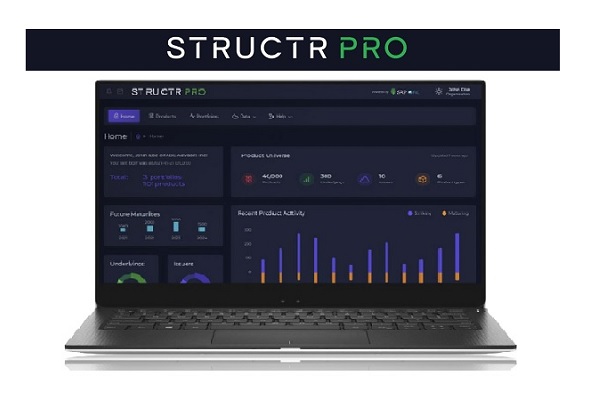The European wide PRIIPs regulation came into effect at the start of 2018. This landmark directive covering virtually all retail investments sold into the EU requires the publication and dissemination of the Key Information Document (“KID”) to all potential investors.
PRIIPs came into force alongside MiFID II, a piece of regulation of larger scope but generally less prescriptive, PRIIPs was an ambitious project many years in the making (first formulated after the financial crisis of 2008-9) borne out of a desire to protect investors from poor information.
The content of the KID will be familiar to many, requiring as it does narrative and general investment information followed by a standardised presentation of risk, performance scenarios and costs. The development of the Regulatory Technical Standards (RTS) was a monumental effort spanning several years, consultations and re-drafts, and input from a large number of parties across the EU. The regulation applies to funds, structured products and insurance products and the different methodologies required to achieve consistency complicated.
Problems and criticisms
However despite the enormous effort in developing the regulation, it has been met with much criticism on a number of issues, both before and after its implementation this year. Despite the long time in preparation many areas have obvious shortcomings.
This EU directive was required to be adopted by all national regulators, such as the UK’s FCA. In the future there will be the further complication of the impact of Brexit but for the present the FCA is simply enforcing the rules as they affect the UK, which is in their entirety.
The first admission that something was seriously wrong with the PRIIPs regulation once it had gone live came in January this year, just three weeks after implementation of the rules.
The FCA published an extraordinary statement which included:
“We understand some firms are concerned that, for a minority of PRIIPs, the ‘performance scenario’ information required in the KID may appear too optimistic and so has the potential to mislead consumers.”
“Where a PRIIP manufacturer is concerned that performance scenarios in their KID are too optimistic, such that they may mislead investors, we are comfortable with them providing explanatory materials to put the calculation in context and to set out their concerns for investors to consider.”
“Where firms selling or advising on PRIIPs have concerns that the performance scenarios in a particular KID may mislead their clients, they should consider how to address this, for example by providing additional explanation as part of their communications with clients.”
These almost unprecedented style of comments is regulation speak for “We were part of the process that got this badly wrong, but we already have had our own rule framework in place (Treating customers fairly) which are more principles based and contradict much of these new rules. We are putting the onus on you, financial company, to make good on all this and to ensure that by following one set of rules you don’t break the others.”
The FCA has more recently (July 2018) published an invitation for feedback of experiences of PRIIPs from the first eight months (FCA Call for Input: PRIIPs Regulation, here ). The feedback period has now closed and it will be interesting to see the replies that come out.
Interesting points
We consider a couple of the points in this document below:
(FCA: Question 2.3) “We know there is some industry concern about how to correctly interpret the scope of the PRIIPs Regulation. We want to hear more about the impact of this on firms and consumers, particularly if a lack of clarity has changed behaviour in the markets.”
In all the debate around methodologies and what purpose they serve the investor, this higher consideration has had relatively little coverage. It is clear that PRIIPs has already had a profound effect and has led to a substantial number of products being withdrawn. This is for several reasons – firms in US and other places outside the EU being unwilling to take on the compliance burden, lack of clarity of methodology for certain product types, disquiet around the mandatory calculation results for some products and uneconomically high costs particularly for smaller size investment launches. Given that MiFID II also went live at the start of 2018 with overlapping requirements for firms it is easy to see how the combined volume of new obligations has caused a lot of pull back, and not in a way that necessarily prunes out unsuitable investments.
Because of the delays, uncertainties and poorly explained methodologies investment firms had a very difficult job in getting ready for January 2018. This was not due to lack of planning or resources but a reflection of the task at hand and the journey towards its implementation. Consequently firms naturally focused on their own obligations and from conversations we have had with our clients there was very little time to properly prepare for, explain or test the new documents with sales people, financial advisers or investors. If the calculations presented in the KID documents made perfect sense this might not have been a problem.
(FCA: Point 3.29) “The risk scale of the SRI is like the Summary Risk and Reward Indicator (SRRI) scale for the UCITS Key Investor Information Document (KIID). Both score products on a scale of 1-7, where 1 is the lowest risk and 7 the highest. But because there is a much wider range of products, with a much wider range of risks, within the scope of PRIIPs, the PRIIPs SRI is calibrated differently from the UCITS SRRI. This means that the risks of a PRIIP and a UCITS cannot be directly compared by reference to the SRI/SRRI. We consider this to be a temporary issue which will be addressed when all UCITS funds start producing the PRIIPs KID. ”
The Association of Investment companies in the UK (The AIC) has already made its submission public and comment on this statement and they address this issue as a serious failing. Unlike some of the more technical issues that have plagued the validity of calculations this one has absolutely no defence. I agree with the conclusion of the AIC that the significant misalignment of the UCITS and PRIIPs risk ratings makes no sense at all. The FCA made a reasonable observation that “Because there is a much wider range of products, with a much wider range of risks, within the scope of PRIIPs, the PRIIPs SRI is calibrated differently from the UCITS SRRI”.
A better calibration
As we argued at the time, a much better and obvious solution to this would have been a calibration scheme which followed the existing UCITS scale from 1 to 6 and simply divided the UCITS category 7 into 7 to 10, to accommodate the desire for PRIIPs to go up to a volatility of 80% as the highest upper limit.
At the moment the current PRIIPs scale and the UCITS risk scale are seriously out of line. For example a fund with volatility 11% would be a UCITS risk 5 and a PRIIPs 3. And a fund with UCITS risk 7 may only be a PRIIPS 5.
Our proposed PRIIPs scale matches the UCITS scale up to 6 and also allows reaching a maximum volatility of 80% as the PRIIPs methodology wanted to achieve. The opportunity to do this has largely been lost because to do so now would contradict the PRIIPs KIDs to date. Sadly this state of affairs applies to many other aspects because of the precedent set of the first year of operation.
When national regulators and ESMA itself seek feedback by the end of the year as they have pledged to do they will find many issues that need addressing made more complex by the need to show some kind of consistency with the first turbulent year of operation.
Tags: Regulation PRIIPs














